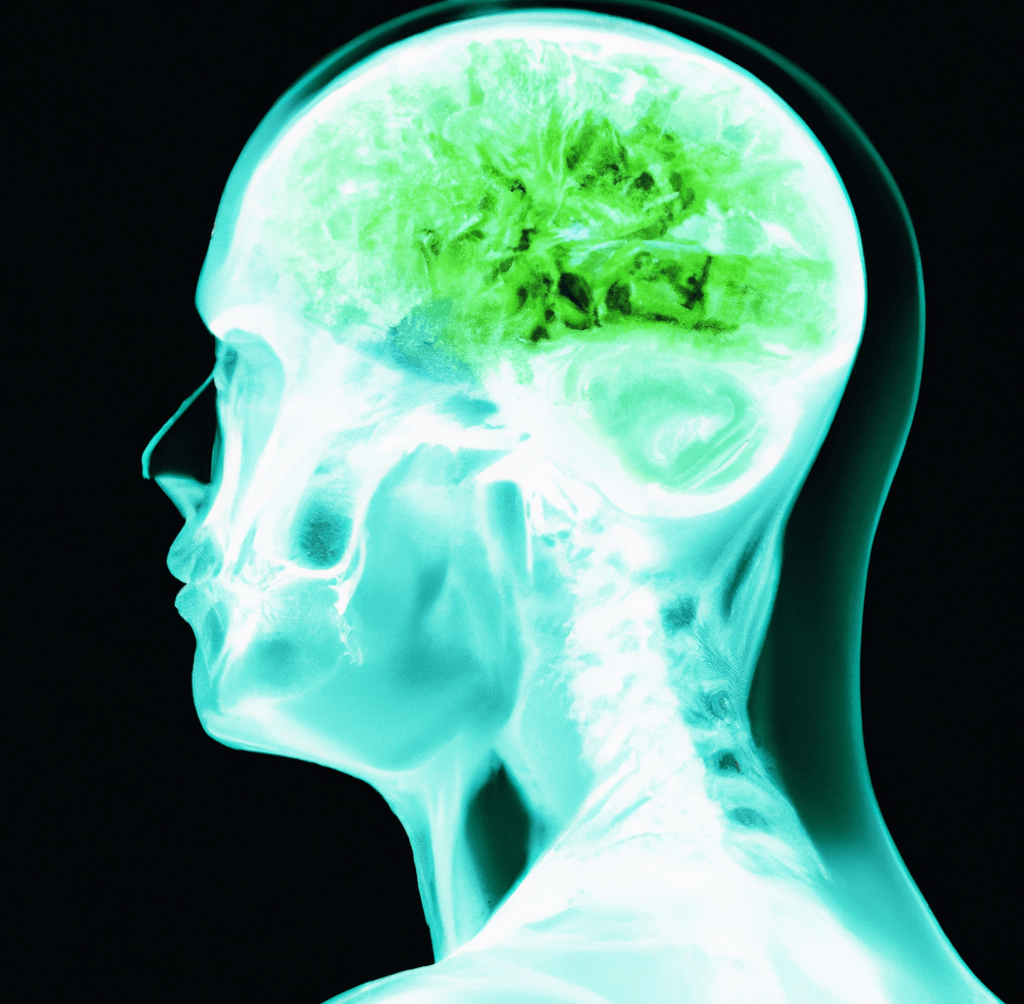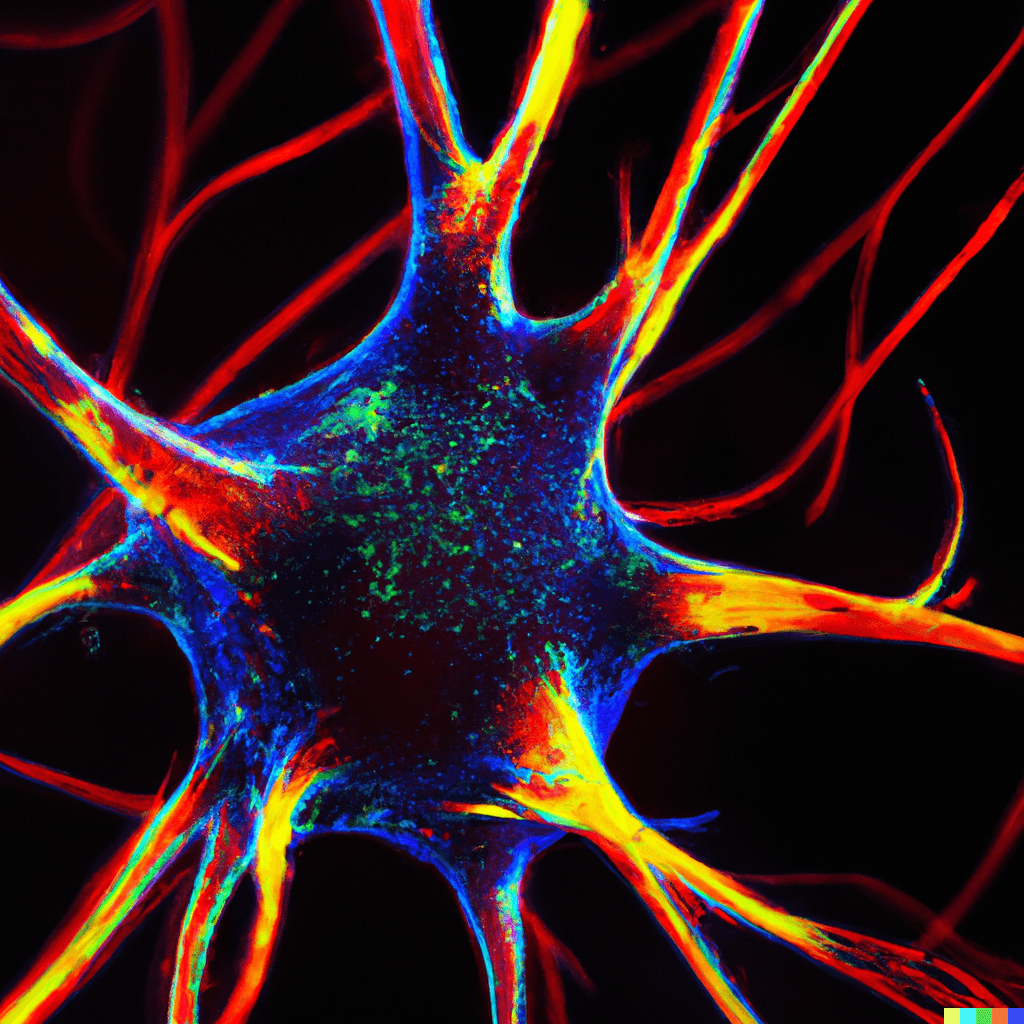Anandamide | Biohacking your brain
20 November 2023 | James Kearslake
Table of Contents
Fun Fact
Anandamide’s name derived from Sanskrit word ‘ananda’, meaning bliss or joy. Discovered in the early 1990s, its name reflects its association with feelings of happiness and relaxation, adding a poetic touch to the science of neurotransmitters. And thus, anandamide is now so aptly known as ‘The Bliss Molecule’.
What is Anandamide
Also known as ‘The Bliss Molecule’, anandamide is a neurotransmitter and endocannabinoid that is produced naturally in the body.
It supports the release of the ‘feel good’ neurotransmitters serotonin and dopamine. These neurotransmitters are key factors in mood regulation and our sense of wellbeing.
When healthcare professionals prescribe medication for anxiety and depression, they often prescribe selective serotonin reuptake inhibitors (SSRIs) which increase serotonin levels in the brain. By inhibiting the reuptake of serotonin, SSRIs enhance its availability.
Anandamide is also a precursor to homeostasis, or the ‘state of balance’ for the body.
Homeostasis is critical to maintaining an optimal internal environment that allows for achieving our peak performance, therefore any supplements that support the body coming back to homeostasis are beneficial.
We talk often of adaptogens which bring the body back to a state of homeostasis, these include:
- Siberian Ginseng | achieve a state of intense cognitive functioning
- Rhodiola Rosea | The natural root that reduces anxiety and alleviates depression
- Ashwagandha | power up the body, brain, and libido
- Maca Root | the libido-enhancing, erectile solidifying supp
- Cordyceps Mushrooms | enhancing sport (and sexual) stamina
- Shilajit Liquid | exponentially increases energy, stamina, and your sexual performance
- Tongkat Ali | increase your sexual energy
- Tribulus Terrestris | the new sex supplement launched to market
The awareness of anandamide supplements is growing as a potential to promote emotional balance, manage stress, and lessen anxiety.
It is also being explored for its potential to module pain with anandamide operating in the endocannabinoid system which supports a role in pain perception and inflammation. It’s therefore being taken within biohacking communities as a natural source of pain relief.

Benefits of Anandamide Supplements
- Improves Emotional Wellbeing – Known as ‘The Bliss Molecule’, anandamide promotes emotional balance by regulating mood and reducing feelings of stress and anxiety. Aptly named, it is a promising option for those looking to lift their spirits naturally, without adverse side effects experienced by SSRI’s like weight gain, dehydration, and disturbed sleep and nightmares. More below on anandamide and mood
- Supports Stress and Anxiety Management – Because anandamide is a key component of the endocannabinoid system, which is responsible for regulating the body’s stress response, anandamide’s role within the endocannabinoid system help modulate cortisol release, preventing an excessive release of cortisol levels during stress response. More below on anandamide and stress
- Promotes Relaxation – It’s ability to reduce stress, as well as increase serotonin levels, means anandamide also promotes an inner sense of calm and helps induce relaxation. A greater sense of relaxation is critical to maintaining quality sleep cycles, a key component in achieving a state of peak performance.
- Potential Pain Relief – As anandamide interacts with the endocannabinoid system, it may also play a role in modulating pain perception and could offer relief to those dealing with chronic pain conditions. Research is still developing in this space, but the supplement is already being taken by those looking for natural sources of pain relief. More below on anandamide and pain relief
Anandamide Regulates Mood
Anandamide helps regulate mood through its interactions with the endocannabinoid system and modulation of neurotransmitter activity. It does this in several ways:
- Endocannabinoid System Modulation – Anandamide is an important component of the endocannabinoid system, a complex network of receptors, endocannabinoids, and enzymes. This system plays a key role in maintaining homeostasis, and regulating mood, stress response, and emotional wellbeing. When anandamide binds to cannabinoid receptors, particularly CB1 receptors found in the central nervous system, it influences the release of neurotransmitters. This modulation of neurotransmitters contributes to the regulation of mood and emotional states.
- Neurotransmitter Influence – Anandamide’s interaction with the endocannabinoid system affects the release and activity of neurotransmitters, including serotonin, dopamine, and GABA. These neurotransmitters are key players in mood regulation:
- Serotonin – Anandamide can influence serotonin levels, known as the ‘feel-good’ neurotransmitter. It is implicated in mood balance, and an increase in its availability contributes to a more positive, and overall better mood.
- Dopamine – Anandamide’s impact on dopamine release also influences the brain’s reward system. Dopamine is associated with pleasure and reward, and its modulation contributes to feelings of happiness and satisfaction.
- GABA – Anandamide’s influence on GABA, an inhibitory neurotransmitter, can contribute to the calming effect on the nervous system, reducing feelings of anxiety and promoting relaxation.
- Stress Response Regulation – Anandamide is involved in the regulation of the body’s stress response. Chronic stress has a significant impact on mood, leading to feelings of anxiety and irritability. Anandamide’s role in mitigating the effects of stress contributes to a more stable and positive mood.
- Enhanced Neural Plasticity – Its also supports the process of neural plasticity. Neural plasticity is crucial for adapting to new experiences and maintaining emotional resilience. By supporting the brain’s ability to reorganize itself, anandamide may contribute to a more adaptable and emotionally balanced state. More below on neural plasticity
- Anti-Inflammatory Effects – Chronic inflammation is a common cause of mood disorders, meaning anandamide’s anti-inflammatory properties play a role supporting mood regulation. By reducing inflammation in the brain, anandamide helps create an optimal environment for more positive emotional wellbeing.

Anandamide Reduces Stress and Anxiety
Anandamide’s key function in the endocannabinoid system has a direct influence on neurotransmitter activity in the brain. The combined effect helps manage anxiety and limits our stress response when our fight or flight is activated.
Anandamide supports stress and anxiety management in several ways:
- Neurotransmitter Modulation – Anandamide’s benefits the release of neurotransmitters including serotonin and dopamine, the neurotransmitters critical for mood regulation. Serotonin, in particular, is known as the ‘feel good’ for its primary function in mood regulation, positive feelings, and sense of joy. By modulating neurotransmitter activity, anandamide contributes to a more balanced and positive mood, and reduces feelings of stress and anxiety.
- Endocannabinoid System Regulation – The modulation of neurotransmitter release also contributes to the regulation of the endocannabinoid system, influencing various physiological processes, including mood, stress response, and pain perception.
- Lessens Stress Response – The endocannabinoid system, including anandamide, is also involved in regulating the body’s stress response. Stress triggers the release of cortisol, the stress hormone that floods our system when our fight or flight response is activated. Anandamide’s actions on the endocannabinoid system help modulate cortisol release, limiting excessive levels of cortisol release during a stress response.
- Supports Hippocampal Function – The hippocampus, a region of the brain involved in memory and emotion regulation, is sensitive to stress. Anandamide has been found to influence hippocampal function, potentially supporting cognitive processes related to stress and anxiety regulation.
- Enhanced Neural Plasticity – Anandamide has been linked with improved neural plasticity, the brain’s ability to adapt and reorganise itself. Neural plasticity is crucial for coping with stress and forming resilient responses to challenging situations. By supporting neural plasticity, anandamide also contributes to a more adaptable and stress-resistant brain. More on neural plasticity below
- Anti-Inflammatory Effects – Paradoxically, chronic inflammation is caused by stress and anxiety, yet can also be a contributing factor to increased stress and anxiety. Anandamide anti-inflammatory properties help reduce inflammation, which help support a calmer physiological state, and reduce feelings of stress.
Important Considerations
While research is emerging on anandamide’s role in reducing stress and anxiety, factors such as genetics, environmental influences, and the overall balance of the endocannabinoid system will contribute to variations in response.
Anandamide’s impact on stress and anxiety is multifaceted, involving intricate interactions within the endocannabinoid system and its influence on neurotransmitter activity. As research progresses, a clearer understanding of anandamide’s role in emotional wellbeing will emerge.
Individuals considering anandamide supplements for chronic stress or anxiety should continue to consult with healthcare professionals, as prescribed medication may be the safest option for you.
Anandamide Promotes Neural Plasticity
Neural plasticity, also known as brain plasticity, is the brain’s ability to restructure its neural pathways throughout our entire lives.
Neural pathways are the connections between neurons which neurotransmitters, or chemical signals, travel across to enable communication between neurons.
These chemical signs transmit sensory information, coordinate motor functions, and facilitating complex cognitive processes including learning, memory, and adaptation to new experiences.
Throughout our lives the neural pathways change based on the on the demands of the individual’s experiences and activities; the concept ‘use it or lose it’ very much applies to our neural pathways, meaning that pathways that do not frequently fire are repurposed by the brain to build connections for new experiences. This process allows the brain to allocate resources efficiently to current demands.
Neural pathways can change in several ways, such as synaptic pruning which can involve the death, digestion, or repurposing of synapses, the forming of new connections which involves the growth of new pathways to establish connections for new experiences, and the adaption and reorganising of existing pathways based on experiences, learning, and changes in the environment.
It’s a dynamic process that leaves the brain continually adapting based on every experience we have. This remarkable malleability, fuelled by the brain’s activities, accounts for approximately 20% of our daily calorie intake, demonstrating the intensity of the functions continuously happening in the brain.
It is neural plasticity that helps us learn new things, but it is also neural plasticity that leaves us forgetting things we used to be perfectly competent with.
However, and most importantly, for those looking to achieve peak performance, understanding neural plasticity and what the mind is capable of is key to recognising the endless opportunities available to you.
When we understand that we can physically rewire our brain to learn new skills, change our thought processes, habits, and behaviours, we become aware of our ability to change the direction of our lives at any age.
With neural plasticity, whatever you have wanted to master is available to you.
So, for the saying ‘you can’t teach an old dog new tricks’, this isn’t exactly true.
You can teach old dogs new tricks, the issue is that most old dogs don’t have the desire to change.
How Anandamide Promotes Neural Plasticity
The direct mechanisms through which anandamide promotes neural plasticity are still being studied. However, researchers indicate several ways in which anandamide contributes to this critical aspect of brain function:
- Endocannabinoid System Activation – Anandamide, being an endocannabinoid, interacts with the endocannabinoid system, which includes CB1 receptors predominantly found in the central nervous system. Activation of CB1 receptors by anandamide is believed to play a role in synaptic plasticity, the ability of neurons to strengthen or weaken their connections.
- Modulation of Neurotransmitter Release – Anandamide’s influence on neurotransmitters, such as glutamate and gamma-aminobutyric acid (GABA), may contribute to synaptic plasticity. Glutamate is an excitatory neurotransmitter involved in learning and memory, while GABA is inhibitory and helps balance neuronal activity. By modulating the release of these neurotransmitters, anandamide may affect the strength and adaptability of synaptic connections, contributing to neural plasticity.
- Brain-Derived Neurotrophic Factor (BDNF) Release – BDNF is a protein that promotes the growth and maintenance of neurons. Anandamide has been associated with the release of BDNF, and increased BDNF levels are linked to enhanced synaptic plasticity and neurogenesis (the formation of new neurons).
- Inhibition of Excitotoxicity – Excitotoxicity occurs when there is excessive stimulation of nerve cells by neurotransmitters, leading to damage or death of these cells. Anandamide’s role in regulating excitatory neurotransmitters like glutamate may help protect against excitotoxicity, supporting overall neuronal health and plasticity.
- Promotion of Hippocampal Function – The hippocampus, a region critical for learning and memory, is highly involved in neural plasticity. Anandamide’s influence on hippocampal function may contribute to the formation of new synaptic connections and enhance plasticity within this important brain structure.
- Stress Reduction – Chronic stress has been shown to negatively impact neural plasticity. Anandamide’s involvement in stress regulation, as discussed earlier, may indirectly contribute to maintaining a conducive environment for neural plasticity. By mitigating the effects of chronic stress, anandamide may support the brain’s adaptive capabilities.
- Anti-Inflammatory Effects – Chronic inflammation can hinder neural plasticity. Anandamide’s anti-inflammatory properties, attributed to its interaction with the endocannabinoid system, may create an environment conducive to neural plasticity by reducing inflammation and promoting a healthier environment for the neural pathway to operate.
Important Considerations
Anandamide’s potential to enhance neural plasticity underscores its importance in maintaining optimal brain function. By interacting with the endocannabinoid system, modulating neurotransmitters, and promoting factors like BDNF release, anandamide may contribute to the brain’s ability to adapt and reorganize itself in response to experiences and learning.
However it’s important to still know that the field of endocannabinoid research is still evolving. The specific molecular mechanisms and pathways through which anandamide impacts neural plasticity needs continued research.
Anandamide as a Pain Relief
Preliminary research indicates that anandamide may contribute to pain relief through its interaction with the endocannabinoid system and modulation of pain pathways.
This is achieved in several ways:
- Pain Pathway Modulation – The endocannabinoid system plays a role in regulating pain perception. It is considered that anandamide’s key role in the functioning of the endocannabinoid system modulates pain signalling pathways, affecting the transmission and perception of pain signals. This modulation occurs in both the central nervous system and peripheral tissues, impacting how we experience pain.
- Synergy with Other Endocannabinoids – Anandamide also synergizes with other endocannabinoids in the endocannabinoid system, optimising regulation of the endocannabinoid system on pain perception.
- Inhibition of Nociceptive Signals – Research is also indicating that anandamide inhibits nociceptive signals. Nociception refers to the process by which the nervous system detects and responds to potentially harmful stimuli, including those that cause pain. By inhibiting nociceptive signals, anandamide has the potential to lessen the perception of pain.
- Endorphin Release – Anandamide also supports the release of endorphins, which are the body’s natural pain-relieving compounds. Endorphins interact with opioid receptors in the brain and spinal cord to produce analgesic (pain-relieving) effects in the body.
- Anti-Inflammatory Effects – Inflammation is a major cause of chronic pain. Anandamide’s anti-inflammatory properties can reduce the pain from common inflammatory disorders like arthritis.
Naturally Stimulate the Endocannabinoid System
Biohacking isn’t only about supplements; it is about using all options at your disposal to prime your body for a state of peak performance. You should focus on also stimulating the endocannabinoid system naturally, through the various options available to you:
- Consistent Exercise – Consistent physical activity has been shown to increase endocannabinoid levels, including anandamide.
- Omega-3 Fatty Acids – Foods rich in omega-3 fatty acids, such as fatty fish like salmon, trout, and mackerel, and flaxseeds (not milled), all contribute to the synthesis of endocannabinoids, including anandamide.
- Cocoa/Dark Chocolate – Cocoa, a key ingredient in dark chocolate, contains compounds that inhibit the breakdown of anandamide, potentially leading to increased levels in the body. Add cocoa directly to protein shakes or enjoy moderate amounts of dark chocolate as a tasty way to support your endocannabinoid system.
- Herbs and Spices – Herbs and spices like echinacea and turmeric contain compounds that interact with cannabinoid receptors and influence endocannabinoid-related enzymes. Try including turmeric with your protein shakes, soups and stews, or view our recommended turmeric supplements here.
- Social Interaction – Positive social interactions and a supportive social environment have been linked to increased endocannabinoid levels. Spending time with friends and loved ones positively impacts the endocannabinoid system, releases ‘the love hormone’ Oxytocin while also providing us with grounding feels of security, support, and
- Sunlight Exposure – Sunlight exposure stimulates the production of vitamin D, which has a modulatory effect on the endocannabinoid system. Spending time outdoors in natural light will contribute to overall health, as well as promote an inner sense of calm and wellbeing. Taking a walk with a friend offers your endocannabinoid system the combined benefits of sunlight exposure and social interaction.
- Hot/Cold Therapy – Exposure to temperature variations, such as heat from saunas and hot baths, or cold from cold showers and ice baths can influence the endocannabinoid system. Visit a health spa for the many benefits of the sauna to ice plunge experience, or if visiting Asia, try the exceptional bathing experience of the Japanese Onsen.
- Quality Sleep – As we continually reinforce, establishing good sleep cycles is critical component of overall wellbeing and an optimised internal operating environment to help you achieve peak performance. Disruptions in sleep patterns adversely affects the endocannabinoid system too, therefore its important to always aim for your 7 – 9 hours sleep per night.
Potential Risks of Anandamide Supplements
While anandamide supplements are generally considered safe for most people, it’s important to know the potential risks with anandamide supplementation:
- Enzyme Interactions – Anandamide is metabolized by FAAH, and interfering with this enzymatic breakdown could lead to unintended consequences. Modulating anandamide levels may impact the delicate balance of the endocannabinoid system.
- Interaction with Medications – Anandamide supplementation could potentially interact with medications that affect the endocannabinoid system or neurotransmitter function. Individuals taking medications should consult with healthcare professionals before considering anandamide supplements.
- Individual Variability – Responses to anandamide supplementation may vary among individuals. Factors such as genetics, overall health, and the functioning of the endocannabinoid system can influence how the body responds to exogenous anandamide.
- Lack of Regulation and Standardisation – The supplement industry may lack consistent regulation and standardization. The purity and quality of anandamide supplements could vary between products, potentially leading to unpredictable effects.
- Incomplete Understanding – The endocannabinoid system is complex, and the full extent of its interactions with exogenous anandamide supplementation is not fully understood. As such, the potential long-term consequences and side effects are not well-established.
- Psychological Effects – Altering endocannabinoid levels may impact mood and cognition. Anandamide’s role in mood regulation could lead to unpredictable psychological effects, and individuals with pre-existing mental health conditions should exercise caution.
- Potential for Tolerance or Dependence – Continuous supplementation with anandamide might theoretically lead to changes in the endocannabinoid system, potentially resulting in tolerance or dependence. However, more research is needed to understand the long-term effects.
Final Thoughts
Anandamide supplements hold promise in contributing to mood regulation through their interactions with the endocannabinoid system and modulation of neurotransmitters.
By influencing serotonin, dopamine, and GABA, as well as regulating the stress response and supporting neural plasticity, anandamide can have a multifaceted role in promoting emotional balance within us.
This is particularly exciting for those of us who struggle with common mood disorders like anxiety and depression.
And with common medications like SSRIs and Xanax having side effects that most of us would prefer not to have, looking to natural sources of mood regulation offers us opportunities to avoid the dependency of formally prescribed medication.
However, while anandamide supplements may offer potential benefits for mood regulation, individual responses can vary. Factors such as genetics, overall health, and the balance of the endocannabinoid system all contribute to how an individual may respond to supplementation.
Additionally, the regulatory mechanisms of the endocannabinoid system and its relationship with mood are complex and continue to be explored by researchers. More studies are needed to fully understand the nuances of anandamide’s impact on mood and emotional wellbeing.
As research progresses in this area, we are excited to see the development of anandamide supplements as a consumer product. This is likely just the beginning for the product, and we expect to see it become more widely used in the coming years.
I personally will be incorporating anandamide into one of my biohacking options, taking it cyclically throughout the year as a little ‘top me up’ once a month.
Who is James Kearslake?
Having been biohacking my mind and body long before it became fashionable, I’ve always lived by the benefits of nature’s resources to improve cognitive and physiological performance. Using my years of experience, products, and wellness practices, I’m now helping others elevate their cognitive performance to help build the life they want. I save you the time I’ve spent learning, so you can focus your time on building.
Proudly AI Supported
I proudly use AI to support development of my articles. As a heavily dyslexic person, writing can be a time consuming process with words often jumbled up and sentences the wrong way round. AI has become my crutch; allowing me to share the immense interest in my mind, while making content creation quicker and more accurate. AI is my benefit.
Did you find this useful?
If so, please do share it with others who may also benefit from it.
Affiliate Policy
We only ever recommend products we know offer value to our readers and that we use ourselves.
When recommending these products, we often include affiliate links so that we earn a small commission on sales made, at no expense to you as the reader.
Affiliate commissions are similar to an advertising fee which retailers pay to website owners, and is often the only way website owners can earn money through the content they create. Therefore, we hope you can support us by using our affiliate links if you decide to purchase products after reading our content, as it helps keep the website operating.
Thank you for always sticking by us, and don’t forget to join our newsletter to get ground-breaking content direct in your inbox.

